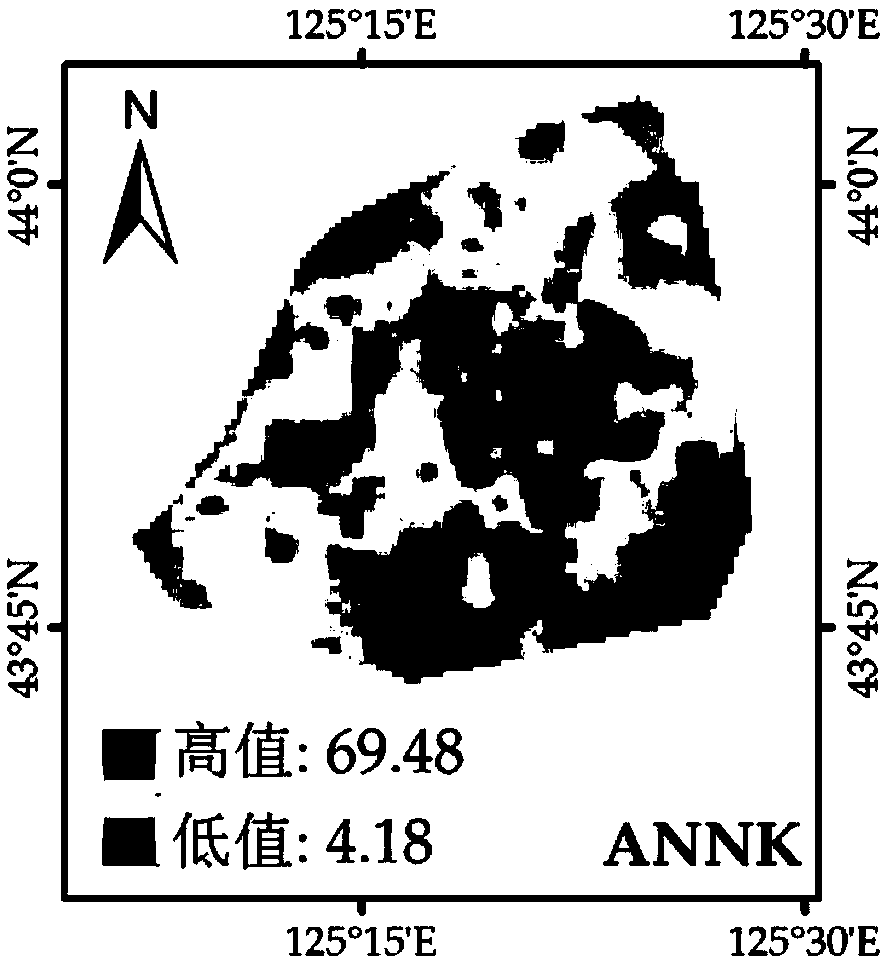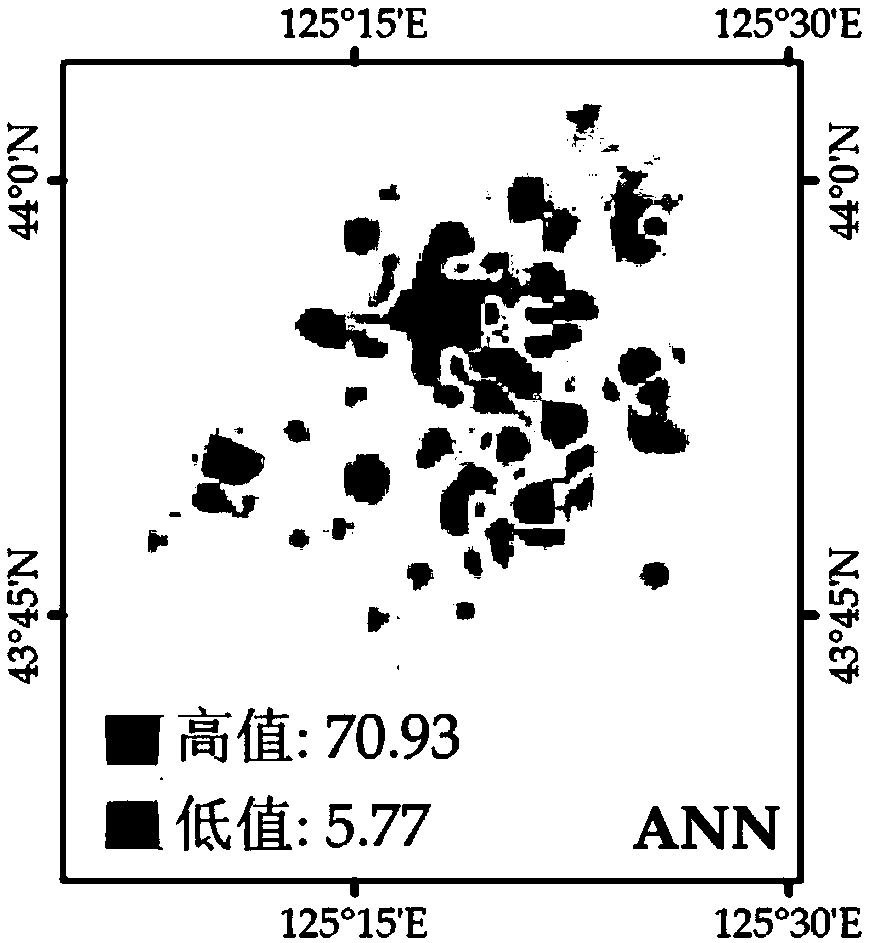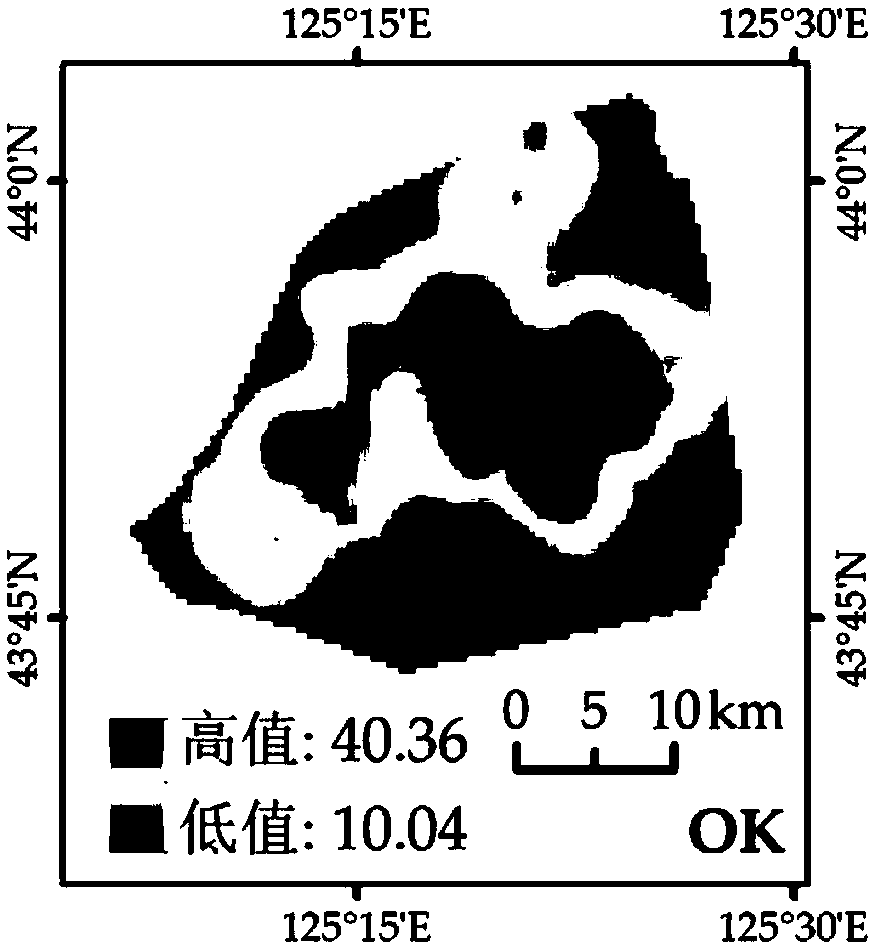Forest soil nutrient spatial prediction method based on artificial neural network Kriging interpolation
An artificial neural network and kriging interpolation technology, which is applied in the field of spatial prediction of forest soil nutrients, can solve the problems that the soil nutrient map is not, does not consider the spatial autocorrelation of residuals, and does not match the soil nutrients, so as to overcome the poor stability of the model. , The effect of solving the phenomenon of soil nutrient mutation and improving the prediction accuracy
- Summary
- Abstract
- Description
- Claims
- Application Information
AI Technical Summary
Problems solved by technology
Method used
Image
Examples
Embodiment
[0040] Based on the measured values of organic carbon content and bulk density of the forest soil surface (0-20 cm), meteorological station observations (precipitation, temperature and humidity), Landsat8OLI remote sensing images and 30-meter DEM topographic data, combined with the multi-layer perceptron neural network model and common A mixture of Kriging interpolation to spatially predict forest surface soil organic carbon content, the specific method is as follows:
[0041] Step 1: Use the Geostatistical Analyst module of ArcGIS software to perform inverse distance weight interpolation on the measured data of forest soil bulk density (BD) to obtain a continuous surface.
[0042] Step 2: Use the Geostatistical Analyst module of ArcGIS software to perform inverse distance weight interpolation on the precipitation (P), temperature (T) and humidity (H) data of the meteorological station to obtain three continuous surfaces.
[0043] Step 3: Use the Surface module, Hydrology mo...
PUM
 Login to View More
Login to View More Abstract
Description
Claims
Application Information
 Login to View More
Login to View More - R&D
- Intellectual Property
- Life Sciences
- Materials
- Tech Scout
- Unparalleled Data Quality
- Higher Quality Content
- 60% Fewer Hallucinations
Browse by: Latest US Patents, China's latest patents, Technical Efficacy Thesaurus, Application Domain, Technology Topic, Popular Technical Reports.
© 2025 PatSnap. All rights reserved.Legal|Privacy policy|Modern Slavery Act Transparency Statement|Sitemap|About US| Contact US: help@patsnap.com



